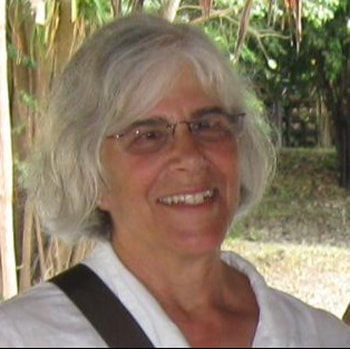Eugenia McNaughton
(Term 2008 - 2022)
U.S. Environmental Protection Agency
U.S. Environmental Protection Agency
Eugenia received her Ph.D. in biology from U.C. Santa Cruz in 1989. After graduating, she worked in the Bay Area for Steve Hansen & Associates (Avon) and MEC Analytical Laboratory (Tiburon), performing all aspects of toxicity testing for municipal and industrial clients participating in the San Francisco Bay Effluent Toxicity Testing Program under the National Pollution Discharge Elimination Program until 1993. She was elected to the Bolinas Community Public Utility Board in 1989, and served as its president from 1991 to 1997. In 1994, she spent 6 months as a Fulbright Scholar at the Agricultural Research Institute in Nicosia, Cyprus, during which time she presented and conducted U.S. toxicity test methods on various types of water bodies on both the Greek and Turkish sides of the island. McNaughton joined the U.S. EPA Region IX (San Francisco) Quality Assurance Office in 1995. She reviewed all types of QA documents related to water projects, developed guidance documents appropriate for smaller EPA grantees conducting environmental sampling, and represented EPA during the development and implementation of the Grassland Bypass Project (1995 to the present), which resulted in the first non-point source TMDL, for selenium, for agriculture in California and the U.S. McNaughton moved to the Water Division in 1996 to oversee the planning of the City of Mexicali, Baja California Wastewater Treatment Plant (Mexicali II) and various water quality related projects throughout the Lower Colorado River Basin. In 2005, she became Manager of the Quality Assurance Office in the Management and Technical Services Division of EPA. She continues to work on selenium-related projects, particularly in the effort to develop chronic aquatic-dependent wildlife criteria for the State of California.
I joined SETAC in 1989 and the Northern California Chapter as it was formed. I participated in and gave presentations about projects through the first years of my work at EPA at national and regional meetings. Once I became a member of the Water Division’s U.S.-Mexico Border Team, however, given the amount of travel the job required, participation in professional organizations became very difficult to fit into my schedule. Having reconnected to the profession by serving on the Northern California Chapter Board since 2008 allows me to give something back to the organization that helped me learn so much in my post-graduate years.
I joined SETAC in 1989 and the Northern California Chapter as it was formed. I participated in and gave presentations about projects through the first years of my work at EPA at national and regional meetings. Once I became a member of the Water Division’s U.S.-Mexico Border Team, however, given the amount of travel the job required, participation in professional organizations became very difficult to fit into my schedule. Having reconnected to the profession by serving on the Northern California Chapter Board since 2008 allows me to give something back to the organization that helped me learn so much in my post-graduate years.
